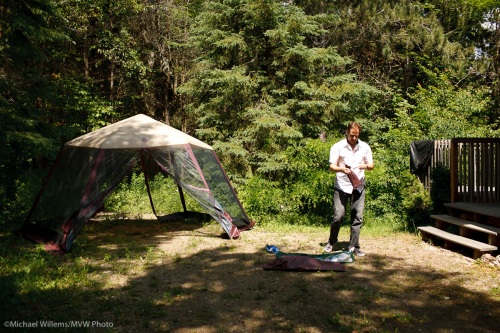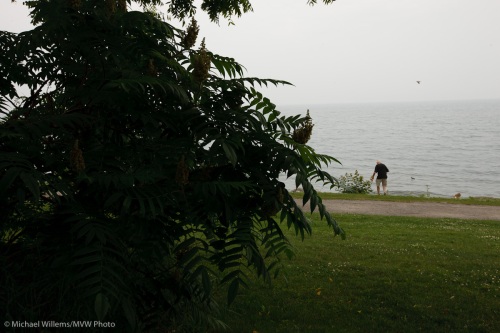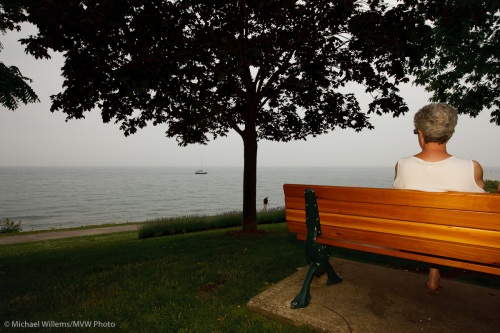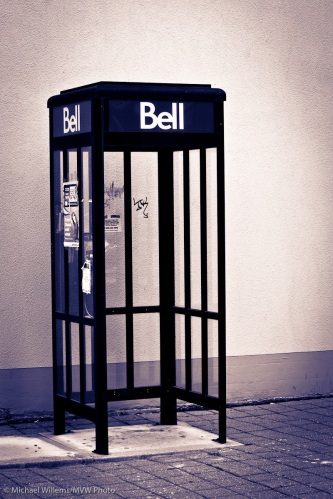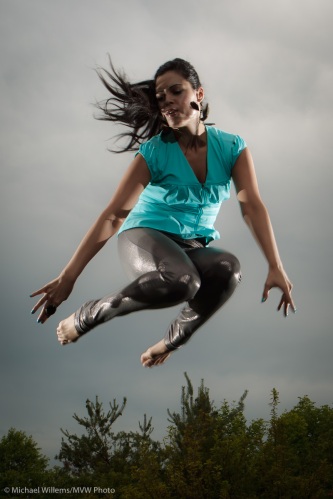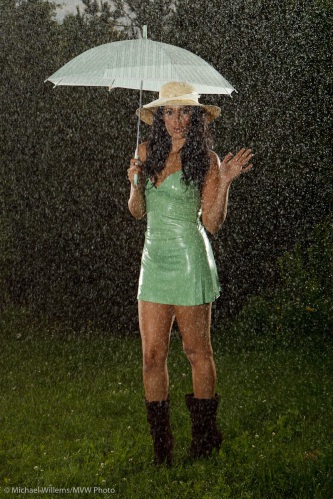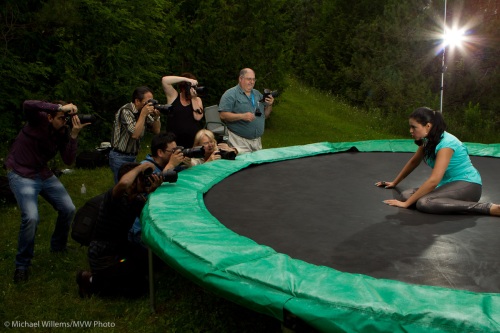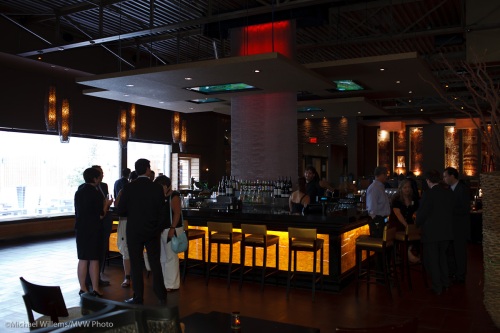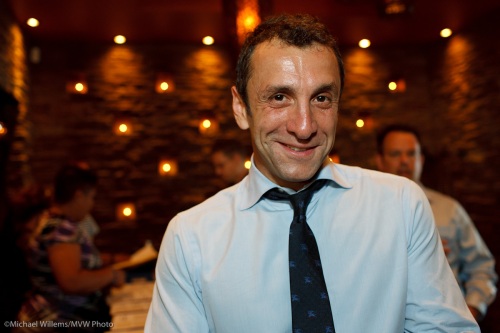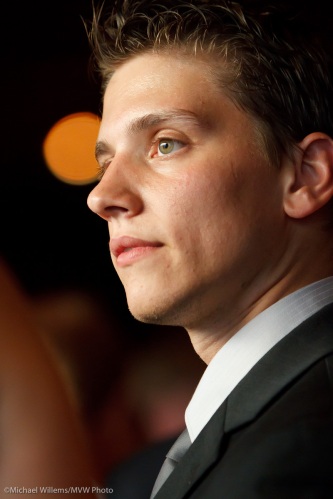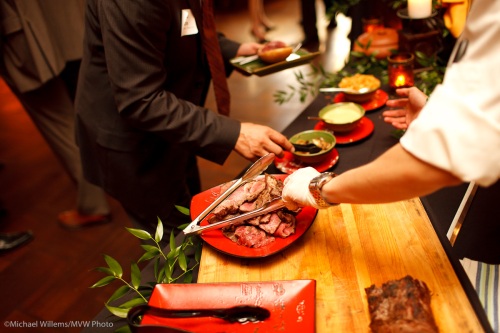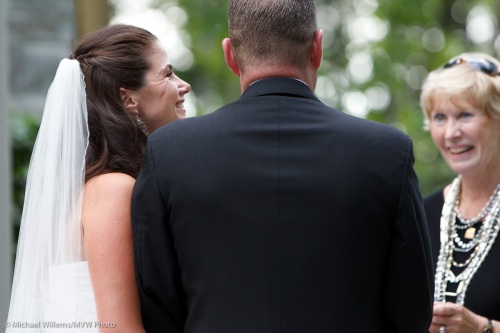It is interesting how little law enforcement officers actually know about the law.
I was in Toronto today to shoot a law firm event. I also took a few street shots, and these show that it appears that Toronto Police, of which right now there are about five million in the streets in gaggles of ten or so, are mistakenly under the impression that:
- I took pictures of them from the back but not the front (false, as the pictures below show).
- This is somehow not allowed (false).
- They should have editorial control over what I photograph (false).
- They are allowed to see my camera’s pictures (false).
- It is only OK for “legitimate” photographers to take photos of things, what with terrorism and so on (false).
- Taking photos for “illegitimate” purposes is illegal (um, a truism, but not a useful one).
- Terrorists use cameras just like mine (false).
- Taking a picture for a legitimate purpose is OK, but taking a picture if you are a protester is not OK (false).
- You need a release to take a photo of a police officer or anyone else (false).
- If I take a picture of a cop I need to show ID, tell them who I am, tell them why I am taking those pictures (false), tell them who I work for (four or five times), and give them a business card (false).
I took this snap of some police officers today:

Toronto officers about to interrogate a photographer
So these officers did not see me take that picture, but they saw me take the next one:
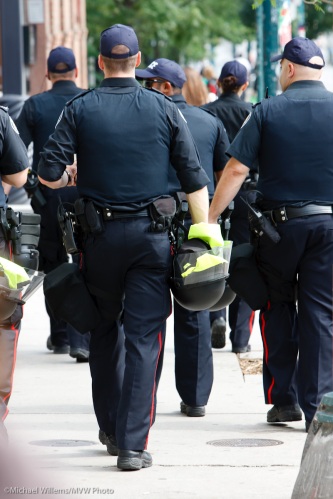
Toronto G20 police officers
Next they interrogated me “because I only took a picture from them from the back but not the front”.
Since these officers have my business card, I assume CSIS (Canada’s secret service) also does, now. So, CSIS and Toronto police, please note: I have spent time in Libya, Saudi Arabia, Iraq, East Germany, and many other such places. They are different from Canada because:
- Unlike in Canada, Big brother is always watching. Police everywhere.
- Unlike in Canada, in those countries authorities can do (mean, restrict) pretty much what they want, whatever the “law” says. Impromptu interrogations are common: “it’s not allowed unless you prove why it should be”. Law, schmaw.
- We here, on the other hand, have the rule of law. Law, not whatever a cop thinks.
Alas, Toronto today felt just like those countries. The officers were courteous, but they were wrong – very wrong. I am a fervent capitalist, CSIS and Toronto Police, but you have just made me into a G20 protestor. Get lost, G20, if my civil liberties need to be trampled upon because of a visit by a bunch of stupid foreign bigwigs, and Mr Harper’s need to spend $1m to impress them with horses, fake lakes, and four-wheel bikes.

G20 police presence
And no, officers, I am afraid that you are wrong in all the above points. I do not need a release to take a picture, you cannot see my pictures unless I have done something wrong, photography is not only allowed for “legitimate” photographers, and I am allowed to photograph security fences and cops. Whose salary, incidentally, my taxes pay.
Of course I cooperated, not wishing to be arrested just before an event I was shooting. And alas, I shall not have time to go back downtown while the G20 is on. I wish I could, because our civil liberties, including the right to take photographs without permission, really should be defended, and restrictions should be questioned. Apparently, it’s needed.

